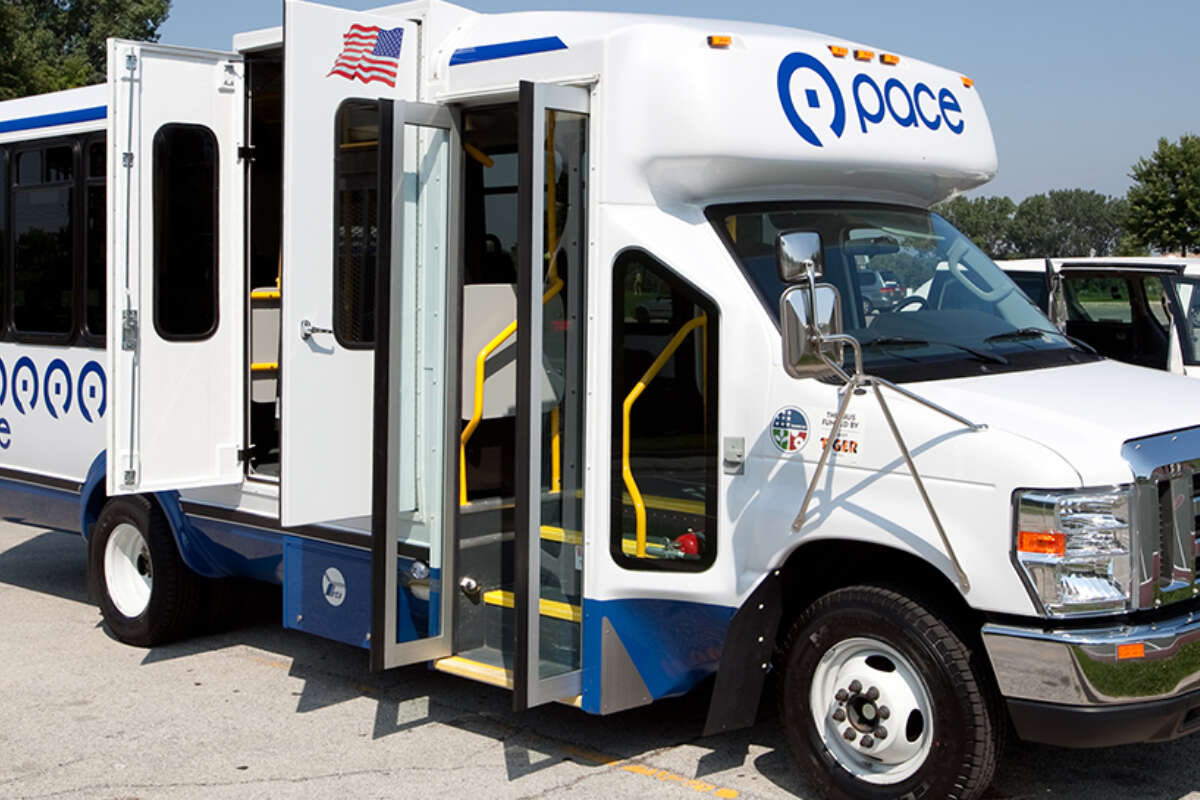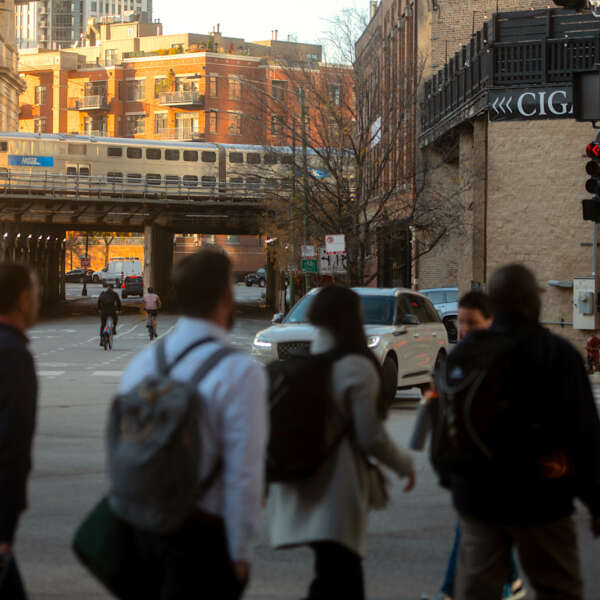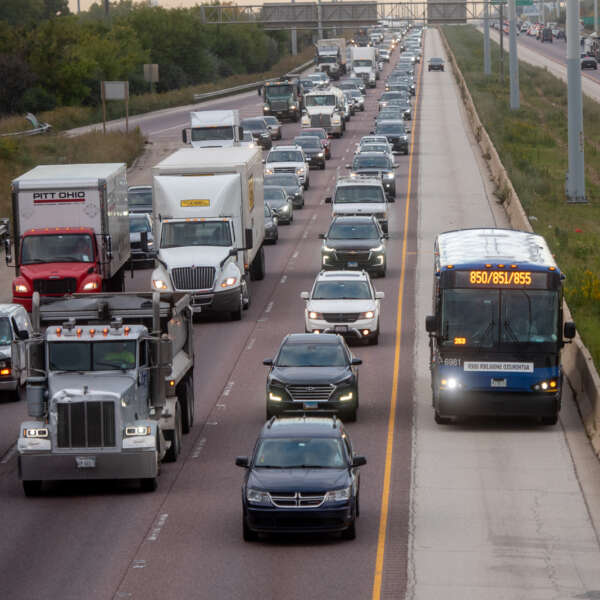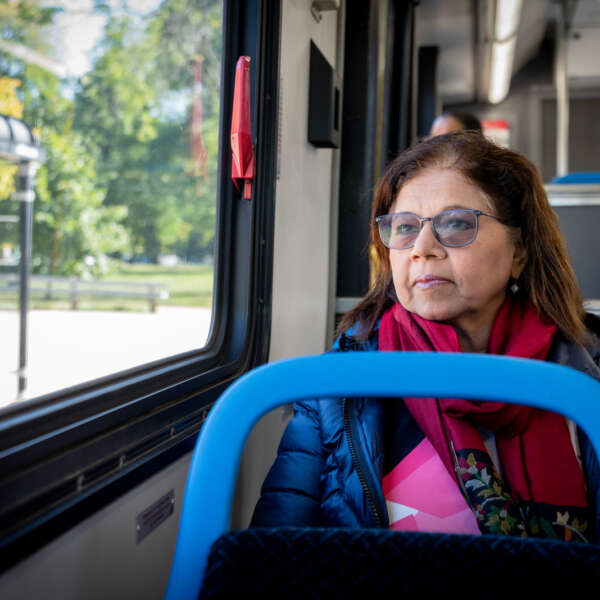Pace and RTA investments in ADA services help reach regional transit goals
May 21, 2021
May 21, 2021

Each quarter, the RTA provides an update about progress toward the three goals of the Invest in Transit strategic regional plan and highlights specific projects or programs that are helping advance those goals.
This post takes a closer look at the Chicago region’s Americans with Disabilities Act (ADA) complementary paratransit services, which are operated by Pace with support from the RTA to help riders with mobility needs use transit throughout the region.
The RTA spotlighted these programs during the quarterly strategic progress report delivered at its May 2021 Board meeting. Watch a recording of the meeting here.
Goal: Deliver Value on Our Investment
ADA capital projects are moving forward this year and will provide significant customer service enhancements by improving transfer experiences and streamlining online services. These projects will help the region’s transit system achieve the first strategic goal of Invest in Transit, “Deliver Value on Our Investment,” which focuses on fiscal stewardship and capital investment.
As part of Rebuild Illinois, the first capital program passed to fund infrastructure in the state in more than a decade, $20 million was allocated to ADA projects and more than half of that money, $10.5 million has already been programmed.
$6.9 million of the $10.5 million programmed will be used to fund the purchase and renovation of a Schaumburg Transfer Facility, which will provide a waiting area for riders at a central location in the region when a transfer is needed. The remaining $3.6 million, will fund technology enhancements that include better integration of ADA payments with the Ventra system, an upgrade to the scheduling system, piloting of a Real Time Departure board, and easier online booking of rides.
In future-year funding, Pace plans to build an additional transfer center as well as look for other technological enhancements for customers.
These projects will increase the value of transit for riders with ADA mobility needs and make efficient use of the available funds.
Goal: Build on the Strengths of Our Network
The second goal of Invest in Transit is to “Build on the Strengths of Our Network” and focuses on improvements to the current transit system.
During the quarterly report, the RTA showcased use of its call centers, which continue to provide a vital information link for transit-dependent customers. The RTA Mobility Services department runs three call centers:
Though curtailed somewhat due to lower ridership during the pandemic, the call centers have begun seeing higher activity during the first quarter of 2021. The three call centers took over 126,000 calls in the first quarter of 2021, or 1,800 calls per weekday, showing that the call center activity is an important service for transit customers in the region. As the graphic below shows, the ADA and Fare Programs call centers saw more of an uptick in calls recently versus the TIC.

Goal: Stay Competitive
The third goal of Invest in Transit is to “Stay Competitive” and focuses on improvements to the customer experience. While continuing to run throughout the pandemic, the Pace Taxi Access Program (TAP) has adapted to COVID-19, and is an example of how the RTA and its Service Boards provide convenient options for riders.
TAP allows ADA Paratransit-eligible City of Chicago riders to hail a taxi for their transportation needs, instead of riding ADA Paratransit. To use TAP, a rider must be certified for ADA Paratransit by the RTA and have an active TAP card to purchase rides. By using regular taxis, TAP allows riders to call or hail a ride at their convenience, whereas ADA Paratransit trips require reservations one day in advance.
In the past, riders would pay a fare of $3 per ride and were responsible for any charges over $30. On March 23, 2020, Pace implemented a new policy to waive the $3 TAP fare as part of its COVID response plan. The use of TAP allows for more social distancing from other riders as well as frees up ADA paratransit services for people not eligible for TAP rides.
Riders who can use TAP services have increased flexibility, and at one point during the pandemic, TAP trips represented nearly one-third of the City of Chicago ADA Paratransit-eligible trips.

As the region’s transit system continues responding to the COVID-19 pandemic, the RTA is committed to implementing the goals of its Invest in Transit strategic regional plan while also looking toward the future with Step 3 of its recovery strategy.
Subscribe to our Newsletter
Related Articles
 How to use transit to enjoy spring in the Chicago region
How to use transit to enjoy spring in the Chicago region
Back in 1837 when Chicago officially incorporated, “Urbs in Horto” (or “City in a Garden”) was the phrase selected for the city’s budding future. Urban desig...
April 12, 2024 Make your commute less taxing with the RTA Transit Benefit Fare Program
Make your commute less taxing with the RTA Transit Benefit Fare Program
As Tax Day approaches on April 15, the RTA is reminding riders about a tax benefit that is good news for both employers and employees: the RTA Transit Benefi...
April 5, 2024 How to use transit to enjoy sports in the Chicago area
How to use transit to enjoy sports in the Chicago area
Chicagoland is home to five major sporting franchises and dozens of local teams. Take the CTA, Metra, or Pace and support the athletes representing the Chica...
March 26, 2024 How survivors of gender-based violence are using transit passes provided by the RTA
How survivors of gender-based violence are using transit passes provided by the RTA
In November 2023, RTA provided 25,000 transit passes loaded with $20 each to The Network: Advocating Against Domestic Violence, an Illinois membership organi...
March 19, 2024 How to use transit during the Kennedy Expressway construction
How to use transit during the Kennedy Expressway construction
A major, multiyear construction project on the Kennedy Expressway stretching 7.5 miles from the junction with the Edens to Ohio Street threatens to leave dri...
March 11, 2024 How to use public transit to celebrate Women’s History Month in the Chicago region
How to use public transit to celebrate Women’s History Month in the Chicago region
March marks Women’s History Month, a time to reflect and celebrate the often-overlooked contributions of women who build up the local economy, cultural capit...
February 29, 2024